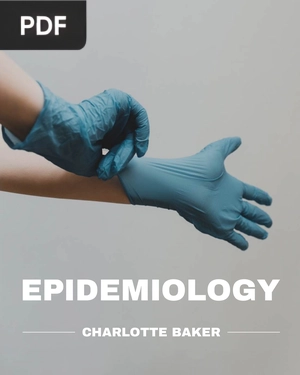Welcome to your ultimate destination for downloading free medical books! Here, you’ll find a wide selection of medical resources and knowledge to help you achieve your academic and professional goals.
With our vast collection of medical books, you’ll be at the forefront of medical knowledge and always ready to tackle any challenge in your career.
We understand the complexity and diversity of medicine, which is why you’ll find books in all its branches in our library, such as cardiology, neurology, pediatrics, oncology, and surgery, among many other specialties.
Whether you’re a student, a practicing professional, or just someone passionate about medicine, you’ll find the book you’re looking for on our platform.
Explore our extensive selection of medical books and discover new horizons in your field of study. Start your journey towards medical excellence today!
Outstanding Books on Medicine
#1 Applied Human Anatomy
Extension: PDF | 189 pages
Applied Human Anatomy, this open textbook offers a comprehensive guide to understanding human anatomy through practical exercises and self-assessment tools.
#2 Internal Medicine
Extension: PDF | 596 pages
Internal Medicine, this book contains lectures on internal medicine for health professionals, offering a wide range of topics essential to this specialty.
#3 Human Anatomy and Physiology
Extension: PDF | 428 pages
Human Anatomy and Physiology, is a lecture notes document for nursing students covering human anatomy and physiology.
#4 Anatomy and Physiology 2e
Extension: PDF | 1317 pages
Anatomy and Physiology 2e, is an anatomy and physiology textbook that covers topics from levels of organization to support and movement systems in the human body.
#5 Physiology Part I
Extension: PDF | 279 pages
Physiology Part I, is a lecture notes document for health sciences students, covering topics such as principles of physiology, excitable tissues, cardiovascular and respiratory physiology, among others.
#6 Medical Terminology for Healthcare Professions
Extension: PDF | 529 pages
Medical Terminology for Healthcare Professions, is an educational resource that addresses medical terminology used in healthcare settings. The document provides detailed guidance on various body systems, including prefixes, suffixes and complete medical terms, intended for students and healthcare professionals.
#7 Clinical Semiology
Extension: PDF | 414 pages
Clinical Semiology, it contains detailed information on physical examinations, respiratory and cardiovascular syndromes and other fundamental aspects for medical practice.
#8 Physical Diagnosis
Extension: PDF | 165 pages
Physical Diagnosis, is a physical diagnosis guide aimed at health sciences students, provides detailed guidelines on history, physical examination, and approaches for specific body systems.
#9 Epidemiology
Extension: PDF | 166 pages
Epidemiology is an epidemiology text designed for clinical students seeking a medical degree with no prior background in public health. Covers basic epidemiology terms and concepts with examples and applications in sports medicine and injury prevention.
#10 Pathophysiology
Extension: PDF | 249 pages
Pathophysiology, this document provides lecture notes on pathophysiology for undergraduate nursing students. It covers key topics related to alterations in the human body due to diseases and abnormal conditions, serving as a theoretical guide for nursing and health sciences students.
1) Abortion Books

Abortion is the termination of pregnancy before the twenty-third week of gestation. After that time, the termination of pregnancy before delivery is called preterm birth. Abortion can occur naturally, spontaneously, or be deliberately induced.
In the case of induced abortion with the necessary medical assistance, it is important to emphasize that it involves various procedures that are carried out with all the necessary guarantees for the patient.
Spontaneous abortion occurs when the pregnancy is lost very suddenly. According to various sources, between 8% and 15% of pregnancies end in spontaneous abortions. The majority of pregnancy terminations occur within the first twelve weeks.
2) AIDS Books

AIDS is a viral disease characterized by the absence of an immune response. The term is an acronym for Acquired Immunodeficiency Syndrome. HIV (Human Immunodeficiency Virus) is the virus that causes the disease known as AIDS. It was discovered by the French researcher Luc Montagnier in 1983.
Over time, the virus attacks and destroys the body’s immune system. A person with a compromised immune system is at risk of contracting a variety of infections that often do not affect healthy individuals. These infections are referred to as opportunistic infections.
Without treatment, HIV infection is likely to progress to AIDS as the immune system gradually weakens. However, advances in Antiretroviral Therapy (ART) have reduced the number of people reaching that stage.
3) Anatomy Books

Anatomy is a science that studies the structure of living organisms, in other words, the arrangement of their bones and organs and the relationship between them. Also, anatomy is the name given to the structure of living organisms. This term is widely used in sciences such as medicine and biology.
Anatomy, therefore, studies the characteristics, location and interrelations of organs that are part of a living organism. This discipline is in charge of developing a descriptive analysis of living organisms.
According to its approach, it is possible to divide anatomy into clinical or applied anatomy, descriptive or systemic anatomy, regional or topographic anatomy, functional anatomy, or anatomical pathology, among others.
4) Anesthesia Books

Anesthesia is the total or partial absence of sensation. It can be produced by trauma or artificially induced. The term is generally used to refer to the medical action of inhibiting pain in a patient by administering a substance with anesthetic properties.
It acts directly on the nervous system of the organism, which runs through the spinal cord, the brain, the vertebral column extending through all the ramifications that reach each of the organs of the body, as well as only to defined parts depending on the type of anesthesia administered.
Anesthesia is divided into three main categories: general, regional and local; all of them can be administered by various methods and different drugs that affect the nervous system in some way.
5) Asthma Books

Asthma is a chronic (long-term) condition that affects the airways in the lungs. The airways are the tubes that carry air in and out of the lungs. With asthma, the airways can sometimes become inflamed and narrowed, making it difficult for air to flow out when exhaling.
Asthma causes repeated episodes of wheezing (a whistling sound when breathing), chest tightness, shortness of breath, and coughing. Coughing often occurs at night or in the early morning. Most people with asthma who receive appropriate treatment can lead a normal life, but if the treatment is discontinued, asthma can cause permanent damage to the airways.
Asthma has no cure, but its symptoms can be controlled. Since asthma tends to change over time, it is important to keep track of signs and symptoms with the doctor in order to adjust the treatment as needed.
6) Books about Cancer
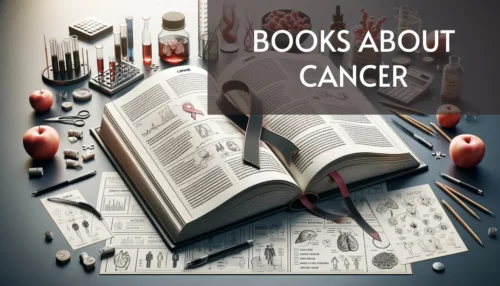
Cancer refers to any of a number of diseases characterized by the development of abnormal cells that divide uncontrollably and have the ability to infiltrate and destroy normal body tissue.
The manifestations can be very varied, ranging from a rapidly growing lump, persistent coughing or hoarseness, or digestive bleeding. It should be remembered that the vast majority of these signs or symptoms are common with other (usually milder) diseases.
Therefore, depending on the symptoms, a certain type of test will be performed to make the diagnosis. For many people, the results can be satisfactory when undergoing cancer treatments.
7) Books about Down Syndrome

Down syndrome is a group of physical and mental alterations caused by a genetic anomaly in the first cell divisions. It is the most common chromosome abnormality in 1 in 800 live newborns.
Down syndrome is a condition that was first described in the mid-1860s by Dr. Langdon Down in England when he realized that there were several people with the same types of facial features, who also had altered intellectual abilities.
People with Down syndrome show some common characteristics but each individual is unique, with a distinctive appearance, personality, and abilities. Their personality, hobbies, hopes, and projects will define them as people and their disability will be just one more characteristic of their person.
8) Breast Cancer Books

Breast cancer is a disease of the mammary gland that occurs when cells grow and multiply abnormally. As a result, they grow uncontrollably and form tumors. It is the most common cancer in women, although it can also occur in men.
Most breast cancers are diagnosed by finding a lump in the breast by palpation or by a screening mammogram. Breast cancer may also emit fluid from the nipple, often bloody; nipple retraction or inversion; changes in the skin or coloring of an area of the breast; or other abnormalities in the structure of the breast.
Breast cancer is always caused by a genetic abnormality (an “error” in the genetic material). However, only 5-10% of cancer cases are the result of an abnormality inherited from the mother or father. In contrast, 85-90% of breast cancer cases are caused by genetic abnormalities linked to the aging process and the “natural wear and tear” of life.
9) Cardiology Books

Cardiology (from the Greek kardiā ‘heart’, and logia ‘study’) is the field of medicine that deals with the study, diagnosis and treatment of diseases of the heart and circulatory system. It is a medical specialty, not a surgical one. The specialist in the surgical approach of the heart is the cardiothoracic surgeon.
When one is faced with a complex disease such as heart disease, it is important to find the most appropriate specialist. A diagnosis of heart or vascular disease often begins with the primary care physician, who refers the patient to a cardiologist. The cardiologist evaluates the symptoms and medical history and may recommend studies that can help make a more accurate diagnosis.
It is important to note that the field of cardiology is complex, so it is common for cardiologists to choose one of several subspecialties to focus their careers on.
10) Childcare Books

Pediatrics is the science that deals with the health care of children during their first years of life. It is a complementary discipline to pediatrics, more specifically associated with preventive pediatrics.
The aim of child care is to ensure that children grow up healthy and acquire the necessary tools to successfully integrate into society. Thus, child care is not only concerned with the physical aspect, but also studies the relationships between the child and those around him/her.
Even before birth, the childcare worker advises and counsels the parents-to-be on parenting and the most basic aspects of baby care. These include, for example, the type of feeding (promoting breastfeeding), the different care techniques, essential hygiene guidelines, etc.
11) Dentistry Books

Dentistry is the medical specialty dedicated to the study of the teeth and gums and the treatment of their ailments. This discipline deals with everything related to the stomatognathic system, which is made up of the group of organs and tissues found in the oral cavity and part of the skull, face and neck.
The origin of dentistry goes back thousands of years. The first documented dental practice took place in Egypt more than 5,000 years ago. Closer in time, barbers were responsible for extracting teeth until dentistry became institutionalized.
Some of the most common conditions of dental patients are cavities, malocclusion, periodontal diseases and dental trauma, among others.
12) Dermatology Books

Dermatology is a specialty of medicine that deals with the knowledge and study of human skin and the diseases that affect it. This specialty is also concerned with the prevention of diseases and the preservation or recovery of skin normality as well as with dermocosmetics which is dedicated to the hygiene, appearance and protection of the skin.
An expert in dermatology is able to study the structure of the skin, analyze its functioning and prevent, diagnose and treat the disorders that may occur in it. It should be noted that the skin’s problems can be generated directly in this integument or be a consequence of some type of internal ailment.
Although education varies in each country, generally a dermatologist is a physician who later specialized in dermatology. This allows the professional to have knowledge of endocrinology, neurology and other issues that are necessary to know the skin in depth.
13) Diabetes Books
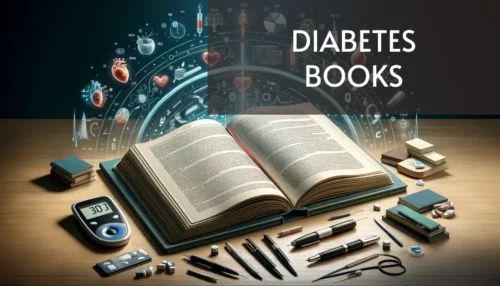
Diabetes is a chronic disease that originates because the pancreas does not synthesize the amount of insulin the human body needs, manufactures insulin of inferior quality or is unable to use it effectively.
Over time, excess glucose in the blood can cause serious problems. It can damage the eyes, kidneys and nerves. Diabetes can also lead to heart disease, stroke and the need for limb amputation. Pregnant women can also develop diabetes, called gestational diabetes.
There is still no cure for diabetes, but you can greatly reduce the effect it has on your life by practicing healthy lifestyle habits, taking necessary medications, getting information on diabetes self-management and not missing appointments with your healthcare team.
14) Embryology Books

Embryology is the specialty that studies the formation and development of the embryo until its birth. Its development begins with fertilization, which gives rise to the formation of the zygote. Once the process in which the main structures and organs of the embryo are generated is completed, which is during the first month, the embryo will be called a fetus.
There are three branches within embryology: comparative embryology, chemical embryology and modern embryology.
Characteristics:
● It studies the prenatal development of individuals.
● It allows understanding the causes that generate genetic variations within the same species.
● Explains normal and abnormal development in the prenatal stage.
● It is able to recognize congenital disease for subsequent correction.
● It is found within several branches of medicine as it is related to pathology, genetics, pediatrics, ultrasonography, obstetrics and anatomy.
15) Endodontics Books

Endodontics is the branch of dentistry concerned with the pulp and tissues surrounding the roots of teeth. “Endo” is Greek for “inside” and “odont” in Greek means “tooth”. A root canal treatment, treats the soft pulp inside the tooth.
The pulp of the tooth is a tissue of small dimensions that has similarity with a thread, which is contained inside the tooth, when this tissue dies or suffers any damage must be removed, performing a root canal treatment, after the pulp is removed, the resulting cavity must be cleaned, then remodeled and finally fill the space, which seals the root canal of the tooth.
Symptoms that indicate to the dentist / endodontist the need for treatment: the presence of pain (may intensify or decrease at certain times of the day) especially when biting, extreme sensitivity to stimuli or hot or cold foods especially liquids, swollen and softened gums.
16) Epidemiology Books

Epidemiology is the science that studies the frequency of occurrence of diseases and their determinants in the population. Its interest is focused on the population, in order to know who, where and when they get sick, as necessary steps to get to know the reason for the distribution of the health-disease phenomenon and the application of this knowledge to the control of health problems.
Epidemiology, whose first antecedents date back to the time of Hippocrates (4th century BC), has evolved over time. Between the 17th and 20th centuries, some research studies on diseases were already being carried out following a scientific method that would lay the foundations of the modern epidemiological method.
Epidemiology generates information in three fields:
- On the natural history of diseases and the effectiveness of preventive and curative measures.
- To formulate, implement and evaluate health plans and programs.
- To improve the clinical decision-making process.
17) Euthanasia Books

Euthanasia is the act or omission that hastens the death of a terminally ill patient with the intention of avoiding suffering. The concept is associated with death without physical pain. In euthanasia, a team of doctors must always be present to administer medication to the patient who does not wish to continue living.
The topic of euthanasia in individuals is a subject that elicits contrasting views. Each country has its own legislation regarding this matter. The main arguments in favor of euthanasia often revolve around the right to die with dignity and to avoid further suffering.
Regarding euthanasia, it is known that there are many types, but the two main ones are “Active” and “Passive.” The former involves administering a series of medications to the patient in order to bring about death without any suffering. Passive euthanasia involves discontinuing treatment that has been established for a patient when it is known that it has no positive impact on the patient’s body.
18) Forensic Medicine Books

The name of Forensic Medicine derives from Forum because in ancient times the place where this discipline was performed was called forums or courts. Nowadays, there are two different schools: the Latin one, which is in charge of the training of physicians called legalists. And the Anglo-Saxon one that is in charge of the training of forensic physicians
Forensic Medicine is the scientific medicine at the service of justice and law, and intervenes in all cases where medical expertise is required to determine responsibilities.
The most frequent cases are those involving injuries: Traffic or occupational accidents, homicides and catastrophes. In other cases there are no injuries, but a medical opinion is essential, as in the diagnosis of age and indecent assault (crimes of a sexual nature).
19) Gastroenterology Books

For you and all our readers who are interested in learning about the functions and conditions that can affect the digestive system, we bring a series of free gastroenterology books in PDF format.
Gastroenterology is the branch of medicine that studies both the normal functioning and diseases of the stomach, esophagus, small intestine, pancreas, colon and rectum, liver, gallbladder, and bile ducts.
All the concepts and information related to this discipline can be found in the texts we share with you in this section of our digital library.
20) General Medicine Books
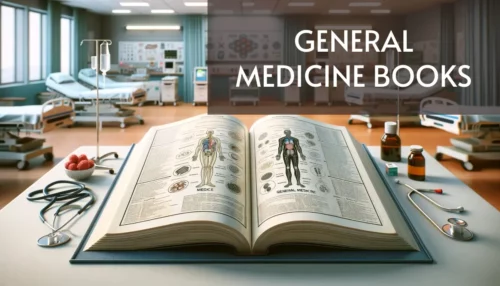
General medicine is the first level of medical care whose objective is to prevent, detect and treat common diseases, as well as to refer to the appropriate specialist, if necessary. Any person, adult or child, man or woman, can visit a general practitioner.
People see a general practitioner when they are unclear about the source of their pain or discomfort, or when they are facing symptoms that are not serious, but require medical evaluation and medication to treat them such as the common cold, abdominal pain or minor bumps. They may also see a general practitioner for a preventive checkup, including medical evaluation and orders for tests.
If you want to get into the world of medicine, we invite you to visit our selection of books on general medicine that will be of great help for your start in this exciting field of study.
21) Geriatrics Books

Geriatrics is the branch of medicine that deals with the problems and diseases of older adults, how to prevent and manage them, and the aging process. Not only the medical aspect, but also the psychological and social aspects that often accompany this process.
Geriatricians are general practitioners or internists with specialized training to address the health needs of older adults. According to the American Geriatrics Society, approximately 30% of people age 65 and older need to see a geriatrician.
The evaluation of older adults is often different from the conventional medical evaluation. In them, and especially in the very old or debilitated, the anamnesis and physical examination may be done at different times, and the examination itself may require two visits, because patients tire quickly.
22) Gynaecology Books

Gynecology is the specialty of medicine dedicated to the care of the female reproductive system. Gynecologists, therefore, are the specialists who deal with issues related to the female sexual reproductive organs (vulva, vagina, uterus and ovaries).
The Greek doctor Soranus, from the Methodist school, is considered the author of the first treatise on gynecology. The advance of medicine has associated gynecology with obstetrics, which deals with pregnancy, childbirth and the puerperium. Currently, most gynecologists are obstetricians and vice versa.
The gynecologist also specializes in other women’s health problems, such as menopause, hormonal problems, contraception (birth control) and sterility.
23) Hematology Books

Hematology is a branch of medicine that studies the morphology of blood and the tissues that produce it. It allows us to generate diagnoses and treat diseases of the blood and its cellular components. It covers the cellular and serum composition of the blood, the coagulation process, the formation of blood cells, the synthesis of hemoglobin and all related disorders.
A hematologist, through a patient’s medical record, physical examination, laboratory tests, imaging tests, and examinations of tissues and samples, is able to tell whether a patient has a blood disease or something related.
Among the many diseases that hematology deals with are the following:
Oncologic diseases:
– Leukemia.
– Lymphomas.
– Myelomas.
Thrombosis, hemorrhagic diseases (such as hemophilia), myelodysplastic syndrome, anemia, neutropenia, thrombocytopenia.
24) HPV Books
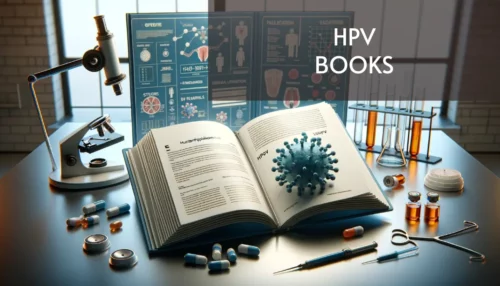
Human papillomavirus (HPV) is a virus, also known by its acronym in Spanish, VPH. It is the most common sexually transmitted infection (formerly known as venereal diseases). Usually, human papillomavirus is harmless and clears up on its own, but some types of the virus can cause genital warts or cancer.
Many people with HPV do not have symptoms. One way to know if you have it is through a Pap smear, as it can detect changes in the cervix caused by HPV. Another way to know is if you have genital warts.
Genital warts typically appear as a small bump or a cluster of bumps in the genital area. They can be small or large, raised or flat, or have a cauliflower-like shape. Doctors usually diagnose warts by examining the genital area. HPV types that affect the genital and anal areas are usually spread through vaginal or anal intercourse but can also be transmitted through other types of contact.
25) Immunology Books

Immunology is the medical speciality that focuses on the study, diagnosis and treatment of diseases related to the immune system and, consequently, to the organs, tissues and cells that modulate the body’s response to the presence of external pathogens (bacteria, viruses, parasites, toxins, etc.).
The immune system is composed of the structures and processes that enable an organism to recognize a foreign element (external or internal) and to respond. This immune response aims to restore balance (homeostasis).
Clinical immunologists perform medical evaluations, procedures and diagnoses, especially in the case of allergies such as asthma, allergic rhinitis, urticaria, dermatitis and severe allergic reactions known as anaphylactic reactions.
26) Internal Medicine Books

Internal medicine deals with those pathologies that affect various organs of the body. It also deals with systemic diseases: that is, those affections that alter different parts of the body at the same time.
Thus, the Internist brings together the function of various specialists and prevents treatments from overlapping. This is fundamental in the case of medication. In fact, if there is no control, medications can interact and cause harmful effects. In any case, the internist always has the support and opinions of the other specialists.
This is a figure that is present both in medical consultations and in the treatment of admitted patients. For this reason, it is especially important to coordinate internal medicine with the other specialties and with surgery.
27) Kinesiology Books

Kinesiology is a science that takes its name from the conjunction of two words of Greek origin: on the one hand, “kínēsis”, meaning “movement”, and “logía”, meaning “study”. It is the study of the mechanics and anatomy of human movement and its functions to promote health and reduce disease.
It is used in natural medicine and increasingly in traditional medicine. The method used to evaluate or detect the cause of the problem or stressor is the Kinesiology Muscle Test, with which you can have safe communication between patient and therapist.
Kinesiology has direct applications for fitness and health, such as the development of exercise programs for people with and without disabilities, preservation of independence of the elderly, prevention of diseases due to trauma or neglect and rehabilitation of people after illness or injury.
28) Neonatology Books

Neonatology is the branch of medicine that includes the study and care of the first hours of life of newborns, which are considered crucial to determine and respond to possible future complications.
Neonatology is related to pediatrics in that those who practice it are ultimately pediatric physicians specializing in those problems or issues typical of newborn infants. Neonatology is usually performed in hospitals and not in outpatient centers since it needs to be carried out from the moment the baby is born in a hospital or private clinic.
In recent years, great advances have been observed in neonatology, given the urgency of controlling the number of deaths that occur during the first 28 days of life. In both developed and developing countries, studies have been carried out to ensure that newborn infants have the most favorable living conditions.
29) Nephrology Books

The word nephrology comes from the Greek νεφρός (nephrós), meaning kidney, and the suffix -logía (study, treatise). It is a medical specialty that is subdivided from the branch of internal medicine and which specializes in the organs of renal function and their structure both for the treatment of diseases related to renal function and the prevention of these to the system.
Nephrology should not be confused with urology, a discipline that encompasses all surgical aspects of the kidney and male genital tract. However, in some cases, such as urinary tract infections, there may be overlap between the two.
A subspecialty of pediatrics is Child Nephrology which encompasses all disorders affecting the kidneys and urinary tract, such as renal failure, hypertension (HPA), urinary tract infections, urinary incontinence…The pediatric nephrologist is also responsible for evaluating and treating growth and developmental problems specifically related to chronic kidney disease.
30) Neuroanatomy Books

Neuroanatomy is the science dedicated to the study of the anatomy of the nervous system, that is, its structure and organization. The study of neuroanatomy is based on the division of the nervous system into two main types, the central nervous system and the peripheral nervous system.
The nervous system fulfills very important functions in the organism: it relates the individual with the environment, fulfills defense and nutrition functions, collaborating with the survival of the person and also intervenes in sexual behavior, assuring the conservation of the species.
The first known written record of a study of the anatomy of the human brain is Egyptian, the Edwin Smith papyrus. The next major advance in neuroanatomy came about a thousand years later, when the Greek Alcmaeon determined that the brain, and not the heart, as previously believed, governs the body and receives information from the senses.
31) Neurology Books

Neurology is the part of medicine that deals with the study of the anatomy, function and development of the nervous system (brain, spinal cord and peripheral nerves) and the muscular system, both in its normal and pathological state.
Neurology comprehensively encompasses: medical care of the neurological patient, teaching of subjects affecting the nervous system, and research, both clinical and basic, within its scope.
Neurologists treat disorders of the nervous system (brain, spinal cord and peripheral nerves), muscle disorders and pain, especially headache. Neurologists are experts in various medical disorders, such as cerebrovascular diseases, Parkinson’s disease, headaches, epilepsy, multiple sclerosis, peripheral neuropathies, infections of the nervous system, tumors and complications of head and spinal trauma.
32) Neuroscience Books
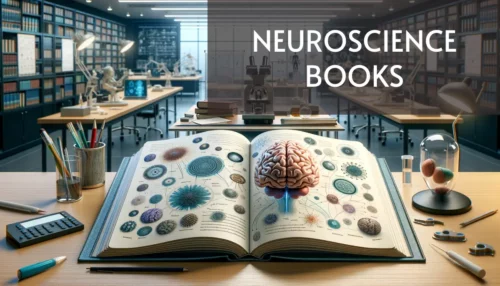
Neuroscience is the scientific specialty dedicated to the integral study of the nervous system, taking into account its functions, structure and other aspects. In this way it helps to explain diverse characteristics of behavior and cognitive processes through biology.
Our brain defines us, processes the world around us and determines how we respond to stimuli. Processes such as falling in love with someone, being able to recognize yourself, or having a smell remind you of a place, all happen in the brain. But it also has dysfunctions caused by diseases, injuries or developmental deficiencies that affect the organ. All these processes have to do with neuroscience.
It can be said, in short, that neuroscience focuses on the brain and how this organ affects thought and behavior. Its general objective is to understand how the mind acts.
33) Nursing Books
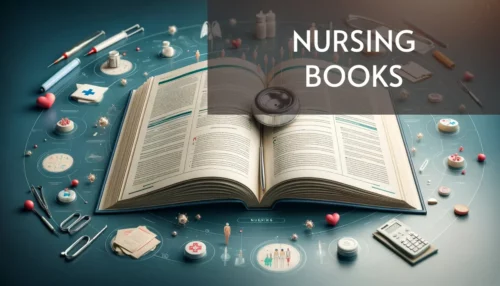
Nursing is a profession that comprises the attention, autonomous care and collaboration of the health of the human being. Nurses are dedicated, in broad terms, to treating the potential or actual health problems that a person presents.
In 1852 was the beginning of professional nursing, since through the publication of Nightingale’s book «Notes on Nursing», nurses began to feel an interest in acquiring technical knowledge about their profession.
Nursing, today, is a career at the university level that is dedicated to the care and attention of medical patients. There are other jobs that perform functions that complement those of the nurse, such as the patient care technician or certified nursing assistant.
34) Nutrition Books

The relationship between nutrition and health has been known and accepted by all since ancient times, both in the preventive sphere and in the recovery from the damage suffered after illness. Thus, Hippocrates already said “let food be your medicine, and medicine be your food”.
Updating our knowledge in the field of nutrition aims to establish the best dietary recommendations to prevent disease and promote optimal health. Dietary habits are the most important environmental factor in the modulation of gene expression during the life of each person.
A correct choice of foods in the context of a varied, balanced diet and in sufficient quantity, will allow the correct development of the individual.
35) Obesity Books

Obesity is known as excess weight. The World Health Organization (WHO) defines obesity and overweight as an abnormal or excessive accumulation of fat that can damage an individual’s health.
Obesity is considered a disease, since excess weight causes major health problems, to the point of becoming a public health problem. An obese person runs the risk of suffering from diabetes, arterial hypertension and cardiac disorders, among other physical complications.
The main therapeutic tools available to combat obesity are dietary treatment, which is the essential basis of therapy, education and behavior modification, increased physical activity, the fight against sedentary lifestyles and the very limited pharmacological therapy available.
36) Obstetrics Books

Obstetrics is the branch of medicine that deals with gestation, childbirth and the puerperium (the period from childbirth until the woman returns to her pre-pregnancy state). In some countries the specialty of obstetrics is also called midwifery, and the specialist is called a midwife.
Obstetricians are concerned not only with the physical condition of the mother and her baby, but also with the psychological and social factors associated with motherhood. Their main objective is to constantly evaluate and monitor the pregnancy up to the time of childbirth.
They also have the responsibility to be attentive to and prevent the occurrence of health disorders during pregnancy, so that the latter develops in a healthy and controlled manner. Some of the health problems that may arise are: placenta previa, gestational diabetes, preeclampsia, toxoplasmosis, abnormal fetal position, among others.
37) Ophthalmology Books

Ophthalmology is the medical-surgical specialty that relates to the diagnosis and treatment of defects and diseases of the visual system. With Otorhinolaryngology and Dermatology, it constitutes one of the so-called first generation specialties and historically it was the first to acquire academic accreditation and social acceptance as a specialty.
The word Ophthalmology is derived from the Greek roots Ophthalmos, which is translated as ‘eye’ and logos, which is one of the dozens of Greek words that are translated as ‘word’, ‘thought’ or ‘speech’. If translated literally Ophthalmology means «the science of the eye».
In the medical practice of this specialty, the field it covers is very broad since there are multiple primary diseases of the eye such as glaucoma, and the eye is the expression of many systemic diseases such as vasculitis, diabetes or high blood pressure.
38) Orthodontics Books

Orthodontics is a dentistry specialty that studies, prevents and corrects alterations in development, dental arch forms and jaw position, in order to restore the morphological and functional balance of the mouth and face, also improving facial esthetics.
The ancient Greek physician Hippocrates of Kos (460-377 BC) was the first person on record to recognize the malposition of the teeth and to speak of the possibility of correcting them for aesthetic reasons. He made this statement in one of his books and, consequently, the Greeks were the first to be concerned about the correct position of teeth.
The orthodontist is the one who determines if orthodontic treatment is necessary based on diagnostic elements such as a complete medical and dental record, a clinical examination, plaster models of the teeth, x-rays and photographs.
39) Parasitology Books

Parasitology is the name given to the discipline that is part of Biology and that deals especially with the study of parasites. It studies parasitism (the phenomenon by which the presence of an organism, the so-called parasite, is found in another organism, the host), as well as the relationships between parasites and hosts.
A parasite, in turn, is an organism that feeds on specimens of other species, living at their expense and affecting them without killing them. They are living organisms with eukaryotic cells, complex structure and nucleus, and are classified into protozoa, helminths and arthropods.
On the other hand, the species in which the parasite settles is formally called host. It is also common for the parasite to become the host of another parasite at some point, which is called a hyperparasite.
40) Pathology Books

Pathology is a branch of medical science primarily concerned with the cause, origin and nature of disease. It involves the examination of tissues, organs, body fluids and autopsies to study and diagnose diseases.
It is classified into general and systematic; the former explores what are degenerations, cancer, necrosis, inflammation, among others, the latter focuses on the study of organ systems, applying the basics learned in general pathology.
Specialists in pathology can be classified, according to their field of action, into clinical pathologists or anatomic pathologists. The former specialize in diagnosis by means of analyses obtained and examined in a clinical laboratory. Anatomic pathologists, on the other hand, concentrate their efforts on the deductions they can make from the morphological observation of lesions.
41) Pathophysiology Books

Pathophysiology is a branch of medicine dedicated to the study of the mechanisms by which different diseases originate, which explains the reason for the symptoms and the different manifestations that accompany them.
Pathophysiology describes the “history” of the disease and, once it reaches the living organism, it is divided into three phases: initial, clinical and resolution. This science does not have a direct relationship with the therapeutics of diseases, but is limited to explaining the processes that determine their symptoms and signs.
Pathophysiology is part of almost all courses taught in medicine, the different specialties of medicine always deal with pathophysiology, this is due to how essential and elementary it is.
42) Pediatric Dentistry Books

Pediatric dentistry is the dental specialty that takes care of the oral health of babies, children and adolescents from before birth until their youth. It is in charge of preventing and detecting possible anomalies in the teeth, gums and jaws of the youngest and treating them correctly, to prevent the problem from affecting the permanent teeth.
The difference between pediatric dentistry and traditional dentistry is that the treatment of cavities varies if the teeth are temporary or permanent, which is why pediatric dentistry only treats children who still have baby teeth.
Oral health care is important from the earliest stages of life. Maintaining a mouth and teeth in perfect condition from childhood not only avoids problems and discomfort at that time, but also prevents the onset of pathologies in adulthood, conditions that can become more difficult to treat if we wait until then.
43) Pediatrics Books

Pediatrics is the branch of medicine that specializes in children’s health and diseases. It is a medical specialty that focuses on patients from birth through adolescence, with no precise limit determining the end of their validity.
It is not therefore a discipline aimed at the study of the diseases of a particular organ or system, but is the medicine of a being whose physical, psychological and social characteristics are very different from those of the adult subject.
Pediatrics deals in a total and complete way with the care of children and adolescents in the context of the environment where they develop (family, school and social). This fact implies, therefore, to assume significant biological, medical and social peculiarities that distinguish Pediatrics from the “transversal” medical specialties and that make a differentiated and specific training mandatory.
44) Periodontology Books

Pediatric dentistry is the dental specialty that takes care of the oral health of babies, children and adolescents from before birth until their youth. It is in charge of preventing and detecting possible anomalies in the teeth, gums and jaws of the youngest and treating them correctly, to prevent the problem from affecting the permanent teeth.
The difference between pediatric dentistry and traditional dentistry is that the treatment of cavities varies if the teeth are temporary or permanent, which is why pediatric dentistry only treats children who still have baby teeth.
Oral health care is important from the earliest stages of life. Maintaining a mouth and teeth in perfect condition from childhood not only avoids problems and discomfort at that time, but also prevents the onset of pathologies in adulthood, conditions that can become more difficult to treat if we wait until then.
45) Pharmacology Books

Pharmacology is the science that studies pharmacological products or chemical substances, covering their biological effects, their composition, their sources and their chemical properties. It is within the field of biomedicine since it studies the biological effects and the effectiveness that drugs have on people in the treatment of a specific medical problem.
Thanks to pharmacology, it is possible to know drugs in depth and to know how their interactions with the organism develop. In this way it is possible to determine their effects on living organisms, which can be positive or toxic.
The origin, history, chemical and physical characteristics, mode of action, absorption and effects of drugs are some of the topics of interest in pharmacology, which has great importance due to the therapeutic use of the substances studied.
46) Physiotherapy Books

Physiotherapy (from the Greek φυσις physis, ‘nature’, and θεραπεία therapéia, ‘treatment’) is a branch of health sciences that uses physical agents (natural elements) to restore function once lost or prevent it from being lost in individuals or populations.
Physiotherapy includes the application of electrical and manual tests to determine the value of muscle involvement and strength, tests to determine functional capacities, range of joint movement and measures of vital capacity, as well as diagnostic aids to control evolution. .
Works at:
- Improve the conditions of patients to carry out their activities of daily living.
- To alleviate the pain of patients as much as possible.
- Improve the physical capabilities of patients.
- Improve the psychological state of patients by promoting adequate physical activity and performing exercises.
- Improve the postural hygiene of those affected.
- Inform patients about the pathology they suffer.
47) Psychiatry Books

Psychiatry is the medical specialty concerned with the prevention, management, treatment and recovery of mental health disorders. The concept of Mental Health includes not only the absence of psychiatric illness, but (according to the World Health Organization) a “state of general well-being, affecting all psychological spheres of the individual”.
It was not until the 19th century that mental disorders began to be scientifically treated as diseases. Until then, people suffering from mental illness were locked up in insane asylums and received various treatments designed to restore their sanity.
In contrast, the psychiatrist is responsible for diagnosing and treating mental illnesses, approaching them primarily from their physiological side, either by prescribing medication or any other type of medical intervention necessary to balance the brain’s biochemistry and repair or compensate for impaired physiology.
48) Radiology Books

Radiology is the medical use of radiation to diagnose and treat various health problems. From the use of gamma rays, X-rays and other types of rays, it is possible to obtain internal images of the body.
Some of the lesions that can be diagnosed by this test are the following: Bone lesions, Diseases of the thorax, Pathologies of the abdomen. In some specific cases, radiology can also be used for treatment.
The radiologist is a physician specialized in the diagnosis and treatment of diseases and injuries using medical imaging techniques such as X-rays, computed tomography (CT), magnetic resonance imaging (MRI), nuclear medicine, positron emission tomography (PET), image integration and ultrasound.
49) Semiology Books

Semiology is one of the sciences that are part of the study of communication, as it is responsible for analyzing the different types of symbols and signs produced by human beings for communication, as well as their meanings and signifiers.
In the field of Medicine, it is dedicated to studying the signs (objective clinical manifestations) and symptoms (subjective perceptions) presented and reported, respectively, by the patient, in order to reach a diagnosis through their organization into syndromes, prioritization, and reasoning.
The instruments of medical semiology are the patient’s interview (or medical history), the general or specific physical examination, and eventually the evaluation of laboratory medical tests. This entire process implies that the physician must possess a broad knowledge of various diseases in order to formulate a solid diagnostic hypothesis.
50) Sexology Books

Sexology investigates sexual interactions, behaviors, orientations and identities. Its specialists, known as sexologists, can contribute to the fight against sexually transmitted diseases, design a treatment for anorgasmia, work on the prevention of unwanted pregnancies and offer therapeutic assistance to increase the intimate enjoyment of a couple, to name a few possibilities.
Everything that has to do with the relationship between men and women, not only what happens to their bodies and their genitals when they meet; but what happens to their lives due to the fact that they are men and women, is the field of application of sexology.
Sexologists say that in order to enjoy a full sexuality it is advisable to have a healthy diet, minimize stress and do sports activities, for example. Also important are the dialogue in the couple and the knowledge of the body.
51) Surgery Books

Surgery is the branch of medicine dedicated to cure diseases by means of operations. There are several branches of surgery such as: general surgery, orthopedic and trauma surgery, plastic surgery…
Surgery is a broad area of care that includes many different techniques. In some surgical procedures, tissue is removed, such as an abscess or tumor; in others, obstructions are opened or unblocked. In other procedures, arteries and veins are connected in new positions to provide additional blood supply to areas that were not receiving enough.
Other names by which the surgery is known are operation or surgical procedure, and it can be minor, when it involves no or minimal risks and is performed under local anesthesia; or major, if performed in an operating room under full anesthesia.
52) Thanatology Books

Thanatology is the name given to a discipline related to the effects of death on the organism. It consists of a series of knowledge from medicine and other sciences that analyzes various aspects of death.
Thanatology was accepted as a science in the 1950s. Since its conception and up to the present day, thanatology has been treated in an interdisciplinary way and includes the evaluation of our relationship with death and not so much to speculations or beliefs (religious, cultural or otherwise).
The main role of the thanatologist in the grieving process is to ensure that the patient or any human being suffering a loss is treated with respect, affection, compassion and that their dignity is preserved. The ultimate goal of the thanatologist is to guide the sick or grieving person towards acceptance of their reality, acceptance which translates into hope about the current situation.
53) Toxicology Books

Toxicology is the scientific study of the harmful effects that occur in living organisms due to chemical substances. It involves observing and documenting the symptoms that occur after exposure to toxic substances. There are various types of toxicology, including environmental toxicology, industrial toxicology, food toxicology, and pharmaceutical toxicology.
At times, toxicology is related to medicine, as it focuses on treating the damage caused by toxins in individuals, while toxicology aims to prevent individuals from being affected by toxins. The professor Mateo Orfila wrote the first formal treatise on toxicology in 1813 in Paris, France, titled “General Toxicology.”
Toxicologists primarily use two approaches to verify the accuracy of their theoretical predictions regarding the toxicity of a substance: experimental tests conducted on animals or plants and retrospective analyses of human poisoning cases.
54) Traumatology Books

Traumatology is the branch of medicine that specializes in trauma and its consequences. Experts in traumatology, known as traumatologists, study the injuries that occur in the musculoskeletal system.
Traumatology also includes orthopedics, which corresponds to a science in charge of diagnosing, correcting and preventing injuries related to deformities that occur in different bone structures, either congenitally or acquired.
The origin of traumatology is very old. Hippocrates (460 B.C. – 370 B.C.) already appealed to splints to immobilize fractured bones and achieve their recovery. Much later, from the combination of calcium sulfate and water, casts were created to achieve immobilizations.
55) Urology Books

On this occasion, we offer a comprehensive set of urology books in PDF format for you to immerse yourself in all the details related to the medical discipline that deals with kidney diseases.
The medical-surgical specialty known as urology is responsible for studying, diagnosing, and treating diseases that affect the urinary system, adrenal glands, male reproductive system, and retroperitoneum in both sexes.
In order to provide you with access to all the relevant information in this area of medicine, we present the best texts with educational and specific content, created by experts.
56) Virology Books

Virology is the study of viruses and virus-like agents, including, but not limited to, their taxonomy, culture and genetics. Virology is often considered part of microbiology or pathology.
Researchers specializing in virology study how each virus produces an infection. When a virus infects an organism, it invades it, provoking a certain immune response, as well as causing different types of damage to the host. Experts investigate this process and how viruses replicate (i.e. reproduce in the organism).
Virology is linked to many other sciences, one of which is entomology (the scientific study of insects) because many viruses need an insect as a vector to spread until generate epidemics, as is the case of the viruses that generate the diseases that have caused the most deaths in the history of mankind (typhus, Chagas disease, sleeping sickness, malaria, yellow fever and bubonic plague).
57) Mental Health Books

Mental health is a state of psychological and emotional well-being that allows the subject to use their mental, social and emotional capacities to perform successfully in everyday interactions. It also addresses the prevention of any alteration, disorder or mental illness and its care from a biopsychosocial perspective.
Mental illness is an alteration of an emotional, cognitive or behavioral type in which basic psychological processes such as emotion, motivation, cognition, consciousness, behavior, perception, language, etc. are affected and which makes it difficult for the person to adapt to the cultural and social environment.
There are conditions that affect the perception of reality and can become dangerous for people who suffer from them, so it is essential to contact a mental health professional to conduct a thorough examination and tell us what the diagnosis is.
58) Genetics Books

Genetics is a branch of biology that studies how hereditary traits are transmitted from generation to generation.
Genes are the units of information used by organisms to transfer characteristics to their offspring. The gene contains encoded instructions for synthesizing all the proteins of an organism. These proteins are the ones that will eventually give rise to all the characteristics of an individual (phenotype).
Genetics takes on special relevance when studying the transmission of diseases. In the same way that eye color is inherited from parents to children, there are also diseases that can be transmitted to offspring, in this case we speak of genetic or hereditary diseases.











